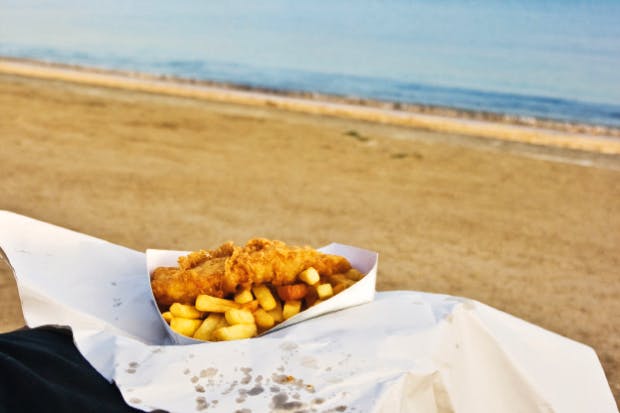Chippy tea. Just writing those words makes me yearn for fish and chips, lathered in vinegar and dosed with salt. Perhaps some mushy peas on the side and a bottle of ketchup to hand.
While a world without fish suppers would be a cold, cold place (for me, at least), new research shows that people are turning their backs on this most traditional of British meals. According to The NPD Group, younger customers are shunning the local chippy, putting the future of fish and chip shops at risk.
Can this really be true? Who doesn’t like a chip butty? And what’s wrong with pea wet and scraps? But the study shows that millennials – those aged between 18 and 34 – only account for 15 per cent of total visits to chip shops.
NPD says QSRs (quick-service restaurants) serving fast-food recorded 5.9 billion visits over the 12 months to February 2017, up 9.2 per cent since 2009. While fish and chip shops are part of this £21.5 billion sector, they are missing out on that growth. There were 327 million visits to fish and chips over the past year, down 4.4 per cent over the past eight years. Fish and chips now represent 5.6 per cent of total QSR, compared to 6.4 per cent for the year end to February 2009.
These are dark days. There’s a deep-seated pleasure in a visit to the chippy, the air thick with the tang of vinegar while chips bubble happily in the fryers. You don’t get that kind of experience at Macky D’s. Nevertheless, that’s where the millennials are choosing to spend their cash. NPD says that this age group makes up around 30 per cent of visits to quick-service restaurants.
Cyril Lavenant, food service director UK at The NPD Group, said: ‘With the exception of two types of quick-service food – fish and chips as well as ‘ethnic’ takeaways such as kebabs – all of the quick service channels in Britain have managed to grow since the 2008/2009 recession because they have transformed their business. The British food service market could be worth more than £57 billion by the end of 2018 and attracting 11.5 billion visits each year. But the nation’s fish and chip operators must adapt to changing trends if they want a slice of that success. When was the last time you saw an exciting meal promotion at your local fish and chip shop that matches the kind of thing you see when you buy a burger or fried chicken? Fish and chip shops need to build on their reputation for quality, bring in the lunchtime traffic, and match the big quick-service competitors with lively meal deals.’
While the bog standard chippy on the corner is unlikely to grasp this nettle (if it ain’t broke, don’t fix it), innovation has crept into the traditional fish and chips market. Take the Hip Hop Chip Shop in Manchester which is putting a new spin on an old classic. Its menu includes blanched and triple-cooked chips, beer batter crab cakes and sausages wrapped in bacon and chilli batter. There’s also battered pepperoni.
Owner Jonathan Oswald told BBC Radio 5 live’s Wake up to Money: ‘I think that a lot of traditional chippies are stuck within the boundaries of tradition, they have a lot of older clientele whereas we want to try and mix it up a bit. Fish, chips and peas is still our main seller, but you want to keep people interested.’
Thankfully, there is some good news for the high street chippy: NPD says that consumers really like the food they offer. More than one in three people say they visit fish and chip shops for the quality of the food but for QSR outlets the quality is a lower motivation at one in four visits.
I wonder, though, if business acumen is part of the chippy’s problem. Outside of London, it’s common for fish and chip shops to be closed at lunchtime and, when they do open in the evening, it’s only for a couple of hours. In my town the only chippy with a work ethic is the one run by a Chinese family. Make of that what you will.
Helen Nugent is Online Money Editor of The Spectator






Comments